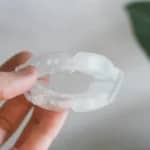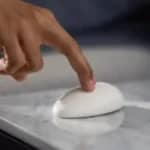
David Rubin
Director of Product TestingFind your perfect mattress
We’ve tested hundreds of mattresses to help you sleep better. All it takes is 5 questions.
What position do you sleep in?

Side

Back

Stomach
Shopping for a new mattress can be daunting, given the hundreds of mattresses that are available on the marketplace. Our mattress quiz will help narrow down your choices. This simple tool asks five quick questions to assess your sleep needs. We’ll look at factors such as sleep position, preferred bed materials, and temperature preferences. Based on your answers, the quiz will suggest mattress models that cater to your unique needs.
Why Do We Ask These Questions?
Sleep Position
Sleep position plays a key role in finding your ideal mattress. Side sleepers require a mattress that’s plush enough to cushion the hips and shoulders but supportive enough to prevent sinkage in the lower back. Back sleepers need a sturdy mattress to ensure back support and spinal alignment, while stomach sleepers need extra firm beds to minimize sinkage in the midsection.
Pain
If you experience pain during sleep, whether in the neck, back, or elsewhere, you’ll want to find a bed that helps prevent or at least reduces the pain. An overly firm bed can sometimes be the culprit behind painful pressure buildup, while an overly soft mattress can lead to lower back pain due to poor spinal alignment.
Materials
Every person has different preferences when it comes to the feel of a mattress, and a bed’s materials play a big role in the overall feel. Foam is ideal for sleepers who enjoy feeling cradled, while latex is best for people who prefer responsive surfaces. Innerspring and hybrid models are a great fit if you like a mix of cushioning and bounce.
Temperature
If you tend to sleep hot, look for beds made with materials that are naturally cool, such as latex or wool. Hybrid models and innersprings also regulate temperature well by allowing airflow through the coils. Beds made with foam are more likely to trap heat, though some foam beds are specifically designed to reduce heat retention. If running hot is a serious problem, you may want a mattress with added cooling features like phase change material.
Co-Sleeping
Sharing the bed with a partner is an important factor to consider when shopping for a mattress. If you’re sensitive to noise and movement during sleep, you may benefit from a mattress that reduces motion transfer and doesn’t make noise when a co-sleeper shifts. Foam beds tend to be excellent choices if you’re trying to minimize noise and movement disturbances.


























